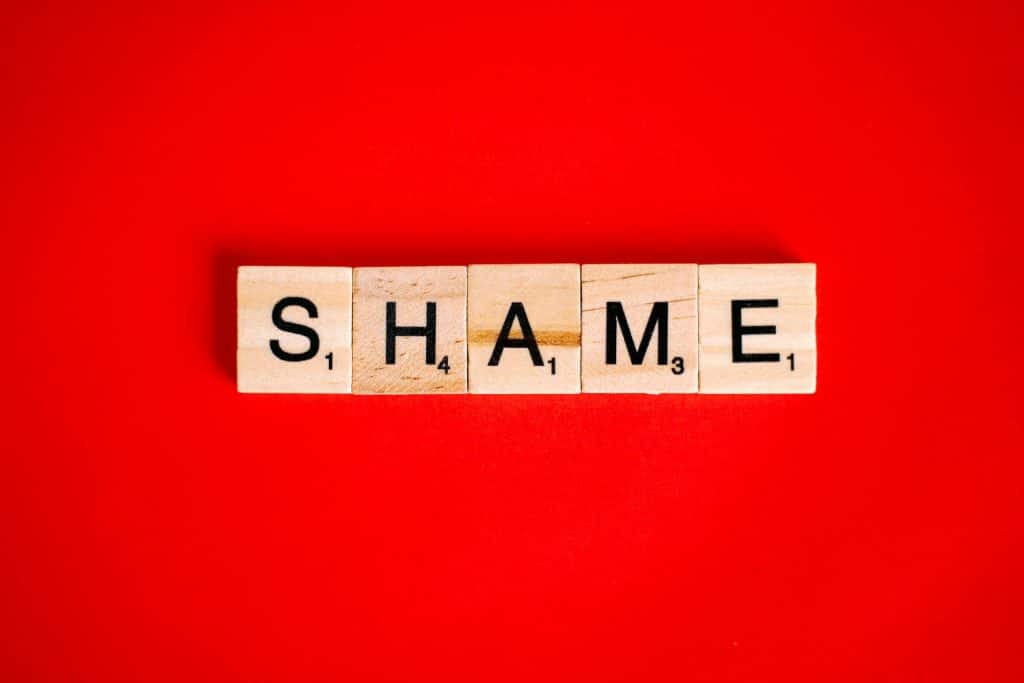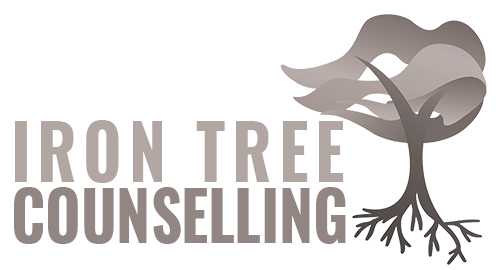Guilt vs. Shame: How to Tell the Difference

Understanding the difference between shame and guilt is the first step toward emotional freedom.
Guilt and Shame are Not the Same
Many men know the feeling, like that knot in your stomach or the persistent voice in your head telling you something’s not right. Maybe it’s a nagging regret about something you said or did, or a deeper, more unsettling sense of being fundamentally a failure.
These uncomfortable emotions, often entangled together, are usually categorized as “guilt” or “shame.”
While they might feel similar, guilt and shame are quite different, and understanding this distinction is important in developing your emotional intelligence toolbox.
For adult men, who are often conditioned to bottle things up and “tough it out,” discerning what you’re truly feeling is the first step towards alleviating anxiety, lifting depression, improving relationships, and managing anger.
Tip: Watch this video here for tips on how to understand what emotions you are feeling.
These internal battles, between suppressing/hiding your feelings and expressing your needs and desires outwardly, can result in self-isolating.
My aim in this blog is to break down the differences between guilt and shame, explore how men are uniquely impacted, introduce the concept of “healthy guilt,” and provide actionable strategies to help you move from feeling like a burden to experiencing confidence.
Guilt: “I Did Something Bad.”
Guilt is about your actions. It’s the feeling you get when you believe you’ve done something wrong, made a mistake, or caused harm to someone else. The focus is on a specific behaviour.
- Example: You snap at your partner after a stressful day. Later, you feel guilty, thinking, “I shouldn’t have said that. It was wrong to speak to them that way.”
- Guilt Arises After: Saying something hurtful, violating your own moral code (like lying or cheating), neglecting a responsibility, or causing disappointment.
- Motivation: Guilt, though uncomfortable, is often a constructive emotion. It motivates you to make amends, apologize, take responsibility, and correct your mistakes. It pushes you towards repair and growth.

Unaddressed feelings of guilt and shame can manifest as chronic anxiety, depression, and social withdrawal, especially for men who are often conditioned to bottle things up and “tough it out”
Shame: “I Am Bad.”
Shame is about your sense of self. It’s a much deeper, more painful emotion where you feel fundamentally flawed, inadequate, or unworthy as a person. It’s a global judgment about who you are.
- Example: You snap at your partner. Instead of thinking about the action, shame might make you think, “I’m a horrible person for losing my temper; I always mess things up. I’m just not good enough.”
- Shame Arises After: Perceived failures to meet expectations (societal or personal), public embarrassment, feeling incompetent, or believing you’re inherently defective.
- Motivation: Shame can be destructive. It leads to a desire to hide, withdraw, deny, or blame others. Because it attacks your core identity, it can feel paralyzing, making change seem impossible.
Shame, when healthy, leads to making positive changes to your life. It facilitates self-reflection about how you would rather act and what you value most.
When we notice our shame and are able to look at it rather than from it, we can learn from it – what not to do in certain situations, what is expected from us in our social groups, and how to feel a sense of belonging.
For instance, when we heed the message of healthy shame, it can help protect us from ostracism, isolation, and exclusion.
Finding the right balance of how you want to be, what you value, and what rules/expectations you believe are right in your life are all important factors to consider. To learn more about the differences between healthy shame and unhealthy (toxic) shame, click here.
Guilt Shame Core Perception “I did something bad.” “I am bad.” Object of Judgment Specific behaviour or action Core identity or self Impact on Self-Esteem Less disruptive, focuses on actions Potentially highly destructive, leads to worthlessness Motivation Repair, amends, change, take responsibility Hide, withdraw, deny, blame others Social Tendency Seek connection, apologize, make things right Isolate, secrecy, avoid eye contact Example Thought “I shouldn’t have said that.” “I’m a horrible person.”
How Guilt and Shame Impact Men’s Mental Health
Unaddressed guilt and especially shame can take a significant toll on your mental and emotional well-being. For men, the impact is often intensified by societal expectations to provide, succeed, and project an image of strength and composure.
The Psychological and Emotional Toll
Persistent, unmanaged feelings of guilt and shame can manifest as:
- Chronic Anxiety and Depression: Feeling trapped, with no clear way out of your emotional state.
- Erosion of Self-Esteem: Shame, in particular, corrodes your self-worth, leading to feelings of inadequacy and even self-contempt and self-criticism.
- Maladaptive Coping Mechanisms: Turning to substance abuse (alcohol, drugs), disordered eating, or self-punishing behaviours to numb the pain.
- Social Withdrawal and Isolation: Shame thrives in secrecy, convincing you that you’re undeserving of connection, leading to a vicious cycle of loneliness and the erosion of existing relationships.
- Anger and Aggression: Often, irritability, defensiveness, or outright anger in men is a defense mechanism against buried shame. It’s an attempt to protect a fragile self from perceived judgment and avoid admitting vulnerability.
Addressing the underlying shame is crucial for truly managing anger issues.
- Physical Manifestations: Sleep problems, digestive issues, muscle tension, and headaches can also stem from unresolved emotional burdens.
The Impact of Societal Expectations on Men
“Be strong.” “Don’t show weakness.” “Tough it out.” These ingrained messages make it incredibly difficult for men to acknowledge or process complex emotions like shame and guilt. Instead, we’re taught to internalize these feelings, leading to what’s known as a “shame spiral.”
When shame is suppressed, that internal critic judging you as “damaged goods” goes unchallenged. This amplifies the “I am bad” narrative, leading to more severe mental health outcomes precisely because the natural process of emotional healing—which requires acknowledgment and processing—is blocked.
For many men, shame stems from feeling like they’ve failed to live up to the ideal of strength, control, success, or productivity.
The silence around these struggles perpetuates isolation, making it even harder to break free and seek necessary help.
*For more information on shame and how to recognize it to shift out of it, click here.
Embracing Healthy Guilt: Your Moral Compass for Growth
While shame can be destructive, guilt has a healthy, adaptive form. Healthy guilt is not a burden; it’s a valuable internal compass that helps you recognize when you’ve done something wrong and prompts you to take responsibility.
Characteristics of Healthy Guilt:
- Temporary: It arises in response to specific actions and fades once you’ve addressed the issue or made amends.
- Focused: It pinpoints the exact action or situation (“what I did”) rather than judging your entire being (“who I am”).
- Proactive: It motivates you to take constructive steps: repair damage, apologize sincerely, learn from the experience, and grow.
- Empathy-Driven: It often comes from genuine concern for others, reminding you of your impact on those around you.
- Proportional: It aligns with the actual mistake, not an exaggerated, irrational self-condemnation.
Benefits of Healthy Guilt for Men:
Reframing guilt as a “moral compass” can be helpful. It shifts the narrative from “I feel bad, therefore I am weak” to “I feel bad because I possess strong values, and this feeling is guiding me to be a better man.”
Healthy Guilt:
- Drives positive behavioural change and accountability.
- Strengthens relationships by motivating sincere apologies and efforts to make things right.
- Serves as a powerful learning tool, encouraging self-reflection and deeper self-awareness.
- Acts as a protective factor for mental health, unlike destructive/toxic shame.
Examples of Healthy Guilt in Action:
- You genuinely apologize to a friend after saying something hurtful, driven by remorse for your specific action.
- You realize your work focus has strained your relationship, feel guilty about neglecting quality time, and proactively plan phone-free dates to reconnect with your partner.
- You take responsibility for a mistake at work and actively seek ways to correct it and prevent it from happening again.

Shame thrives by hiding in the darkness; empathy and authentic connection are its most potent antidotes. Allowing the light to shine on the parts of us we feel ashamed about facilitates our healing journey.
Strategies for Healing and Managing Guilt and Shame
To turn these emotions into opportunities for growth, you need to be intentional. For tips on how to develop healthy emotional habits and break free from guilt and shame spirals, click here.
Strategies for Guilt:
Since guilt is tied to specific actions, these strategies involve direct engagement:
- Practice Self-Reflection: Journalling can help you understand the root causes of your guilt, clarify your thoughts, and pinpoint the specific actions that led to it. Try the ‘Thought/Feeling Log’ to guide your journaling process.
- Take Responsibility and Make Amends: If your guilt stems from harming others, take concrete steps. A sincere apology, a reparative action, or a gesture of genuine regret can offer profound relief and help heal damaged relationships. For men, freely admitting wrongdoing, while painful, is a big step towards freedom.
- Practice Self-Forgiveness and Learn: Treat yourself with kindness. Everyone makes mistakes. Learn from your experience, separate the behaviour from your inherent worth, and extend forgiveness to yourself.
Strategies for Shame:
Shame, being deeply rooted in self-perception, requires internal recalibration and connection:
- Practice Self-Compassion and Challenge the Inner Critic: Shame thrives on a harsh internal voice. Actively recognize and counter these negative thoughts with balanced, self-compassionate ones.
Reframe “I’m a terrible person” to “I made a mistake, but that doesn’t define me.” Review the
‘Getting to know your inner critic’ handout for support with this. - Recognize Shame as a Survival Tactic: Understand that shame can be a defense mechanism, a feeling, not a definitive truth about your worth. This perspective can diminish its overwhelming power.
- Seek Healthy Connections and Break Secrecy: Shame thrives in isolation and gains its power by hiding. Sharing your feelings with trusted friends, family, or a therapist is transformative.
This act of vulnerability is crucial for healing, demonstrating that true strength lies in facing and articulating difficult emotions, not suppressing them.
- Reframe Your Narrative: Work to reshape the stories you tell about yourself. Instead of viewing yourself as inherently flawed, try and see yourself as a survivor with the strength to heal.
General Healing Strategies:
These apply to both guilt and shame:
- Seek Professional Support: For overwhelming or persistent feelings, professional therapy or counselling is invaluable.
Therapists provide a non-judgmental space, help you explore sources of these emotions, and develop effective coping strategies. Group therapy can be particularly powerful for men, fostering camaraderie and reducing isolation.
- Develop Emotional Outlets: Engage in healthy activities that provide an emotional lift: regular exercise, meditation, or actively seeking opportunities for fun and laughter.
- Build a Supportive Environment: Cultivate a network of trusted individuals who offer understanding and encouragement. This directly counteracts isolation and provides a foundation for open communication and shared healing.
Your Path Toward Emotional Well-being
Understanding the critical distinction between guilt and shame is more than just knowledge; it’s an important first step towards mastering your emotional landscape.
This clarity empowers you to address these complex emotions constructively, moving from passive suffering to active healing.
For men, this journey often means challenging deeply ingrained societal norms that equate emotional expression with weakness.
But embracing vulnerability and actively seeking support are, in fact, courageous steps towards cultivating true strength and resilience. Remember, shame thrives in secrecy and isolation; empathy and authentic connection is its most potent antidote.
Healing from the burdens of guilt and shame is a continuous journey, not a singular destination.
Yet, it is a journey that promises profound personal growth, improved relationships, and a more fulfilling and authentic life.
By applying these strategies, you can transform these challenging emotions into powerful opportunities for self-improvement and lasting emotional well-being.
Need Support? If you’re struggling with persistent feelings of guilt, shame, anxiety, depression, or anger, or grappling with relationship issues, don’t hesitate to reach out. You can learn more about my counselling practice to see if a free consultation is something you are interested in.
This blog post is intended for informational purposes only and does not constitute medical advice. If you have concerns about shame, guilt, or your mental health, please consult with a qualified healthcare professional.




